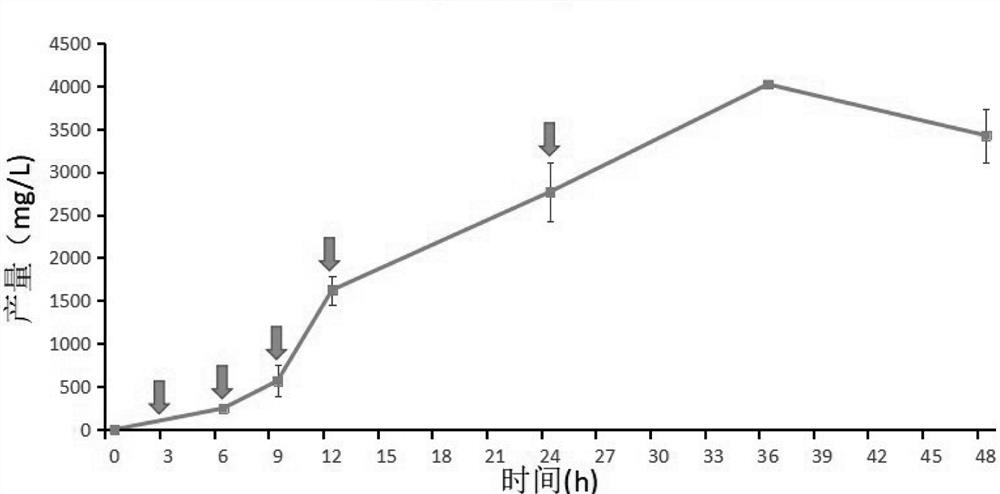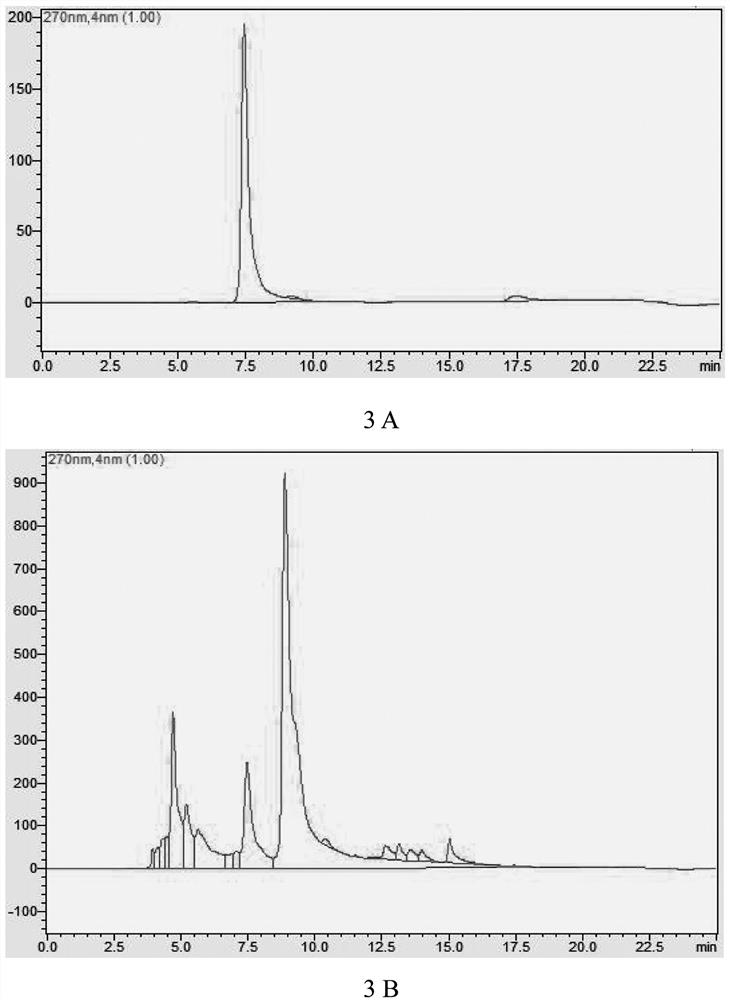Engineering bacterium for synthesizing salicin as well as construction method and application of engineering bacterium
A technology of salicin and engineering bacteria, applied in the field of bioengineering, can solve the problems of low extraction rate, low content of salicin, rare salicin and the like
- Summary
- Abstract
- Description
- Claims
- Application Information
AI Technical Summary
Problems solved by technology
Method used
Image
Examples
Embodiment 1
[0045] Example 1 Recombinant plasmid pZE-OSSGT1
[0046] The recombinant plasmid pZE-OSSGT1 provided in this example is mainly obtained by linking the group encoding glucosyltransferase (OSSGT1) to the Escherichia coli expression vector pZE12-luc.
[0047] The method for constructing the above-mentioned recombinant plasmid provided in this example specifically includes the following steps. Screening for genes encoding glucosyltransferase (OSSGT1) derived from bacteria, fungi or protein engineering. After the target fragment is obtained by PCR amplification of the target gene encoding glucosyltransferase (OSSGT1), the target fragment and the vector are digested with an appropriate enzyme, and the digested fragment is recovered, and then inserted into the expression plasmid On pZE12-luc, obtain the pZE-OSSGT1 recombinant plasmid (see Table 1). Specifically, in this example, the glucosyltransferase (OSSGT1) is derived from Akita Komachi rice.
Embodiment 2
[0048] Example 2 Engineering bacteria for synthesizing salicin: recombinant Escherichia coli BW - an Escherichia coli strain containing the pZE-OSSGT1 recombinant plasmid
[0049] The engineering bacteria for synthesizing salicin provided by the present invention have no special requirements on the type of host strain used to construct the expression plasmid. In the embodiment of the present invention, strain BW25113 is used as the initial host for constructing the plasmid.
[0050] First, pick fresh BW25113 colonies and inoculate them into 4 mL of LB medium, incubate at 37°C for 8–12 h, then inoculate 1 mL into 100 mL of LB medium, and incubate at 37°C until OD 600 When the growth reaches 0.6, centrifuge at 6000 rpm for 10 min at 4 °C to collect the bacteria, wash with 10 mL of 10% pre-cooled glycerol, centrifuge at 6000 rpm for 10 min, repeat the glycerol washing step, and drain the remaining glycerol as much as possible after centrifugation. Finally, an appropriate amount o...
Embodiment 3
[0051] Example 3 Application of Recombinant Escherichia coli BW: Combining Salicyl Alcohol to Produce Salicin by Fermentation
[0052] The application of recombinant Escherichia coli BW in the production of salicin includes: picking fresh recombinant Escherichia coli BW engineering single colonies on the plate and inoculating them into 4 mL LB test tubes containing the corresponding antibiotics, culturing at 37°C for 12 h, and then transferring to the tubes containing the corresponding antibiotics. Fermentation was carried out in shake flasks with 50 mL of M9 medium, the inoculum size was 1% by volume, the fermentation temperature was 37°C, and the rotation speed was 220rpm; wherein, the M9 medium included: 2.5 g / L glucose, 20 g / L Glycerin, 5 g / L yeast powder, 6 g / L Na 2 HPO 4 , 0.5 g / L NaCl, 3 g / L KH 2 PO 4 , 1g / L NH 4 Cl, 2g / L MOPS, 246.5 mg / L MgSO 4 ·7H 2 O and 14.7 mg / LCaCl 2 2H 2 O, and add corresponding antibiotics according to the actual situation. The inducer ...
PUM
 Login to View More
Login to View More Abstract
Description
Claims
Application Information
 Login to View More
Login to View More - R&D
- Intellectual Property
- Life Sciences
- Materials
- Tech Scout
- Unparalleled Data Quality
- Higher Quality Content
- 60% Fewer Hallucinations
Browse by: Latest US Patents, China's latest patents, Technical Efficacy Thesaurus, Application Domain, Technology Topic, Popular Technical Reports.
© 2025 PatSnap. All rights reserved.Legal|Privacy policy|Modern Slavery Act Transparency Statement|Sitemap|About US| Contact US: help@patsnap.com



